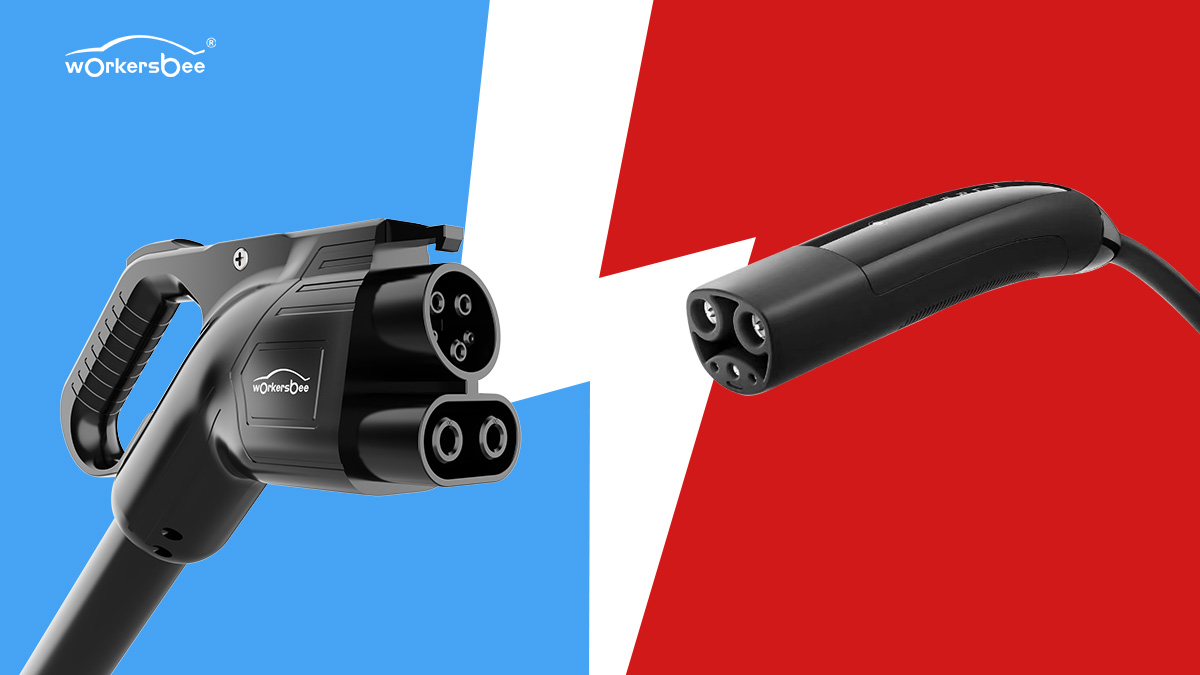
CCS is dead. Following Tesla announced the opening of its charging standard port, known as the North American Charging Standard. CCS charging has been talked down since several leading automakers and mainstream charging networks have turned to NACS. But as we can see, we are now in the midst of an unprecedented electric vehicle revolution, and changes may come unexpectedly, as they did when CCS first entered the market. The market vane can change suddenly. Whether due to government policy, strategic moves by automakers, or technological leapfrogging, CCS Charger, NACS Charger, or other charging standard chargers, who will be the ultimate master in the future will be left to the market to decide.
The White House's new standards for electric vehicle chargers list several mandatory requirements for charging facilities to receive billions in federal subsidies that may become the basic requirements for future EV chargers— reliable, available, accessible, convenient, and user-friendly. Before the day when the market will declare the true winner, all CCS stakeholders can do is make all preparations to cater to or create chargers that the market needs.
1. Availability and Reliability are Primary Prerequisites
The White House administration requires chargers to achieve 97 percent uptime for federal funding. But we all know that this is just a minimum requirement. For the end users of EV chargers (electric vehicle owners), they expect it to be 99.9%. Anytime their EV battery runs low but the trip isn't over, in any weather condition, they want the EV chargers they come across to be available and working.
Certainly, in addition to the proper operation of the equipment, they also demand to ensure its security. Due to the physical characteristics of the charging cable, when it is plugged into the electric vehicle to start charging, the temperature of the cable will inevitably rise, which requires a very high safety performance of the equipment.
Workersbee has always been committed to electric vehicle charging technology, and we are an acclaimed EVSE manufacturer in the European and North American markets. Our CCS charging connectors have excellent means of temperature monitoring. Multi-point temperature sensors are used to monitor the temperature status of the plug and cable, with current regulation and cooling to obtain a balance between safe temperature and high current, effectively preventing the danger caused by overheating during charging.
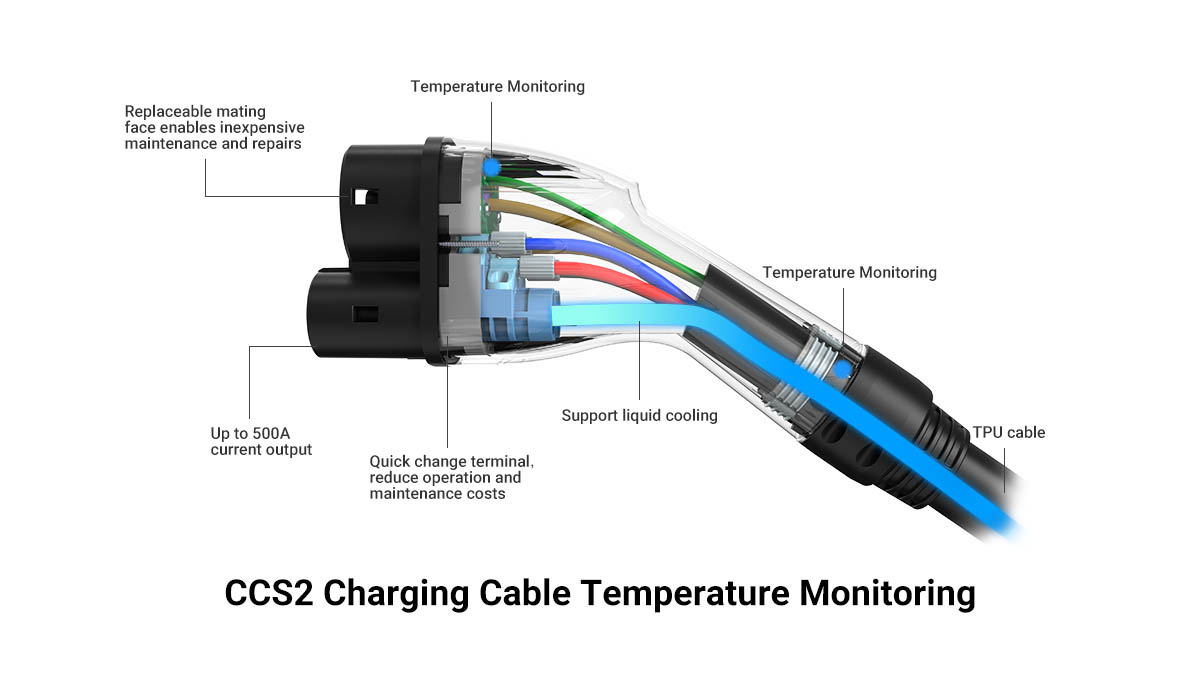
2. Charging Speed is the Key to Winner
Tesla can occupy such a huge market share, the killer feature is its Supercharging network. As Tesla's official advertisement, charging for 15 minutes can add 200 miles of range to a Tesla car. To be honest, EV owners, their demand for charging speed is not always very high.
Many owners have a Level 2 AC charger at home for overnight charging, which is sufficient for the next day's commute. It's cost-effective and will protect the EV battery.
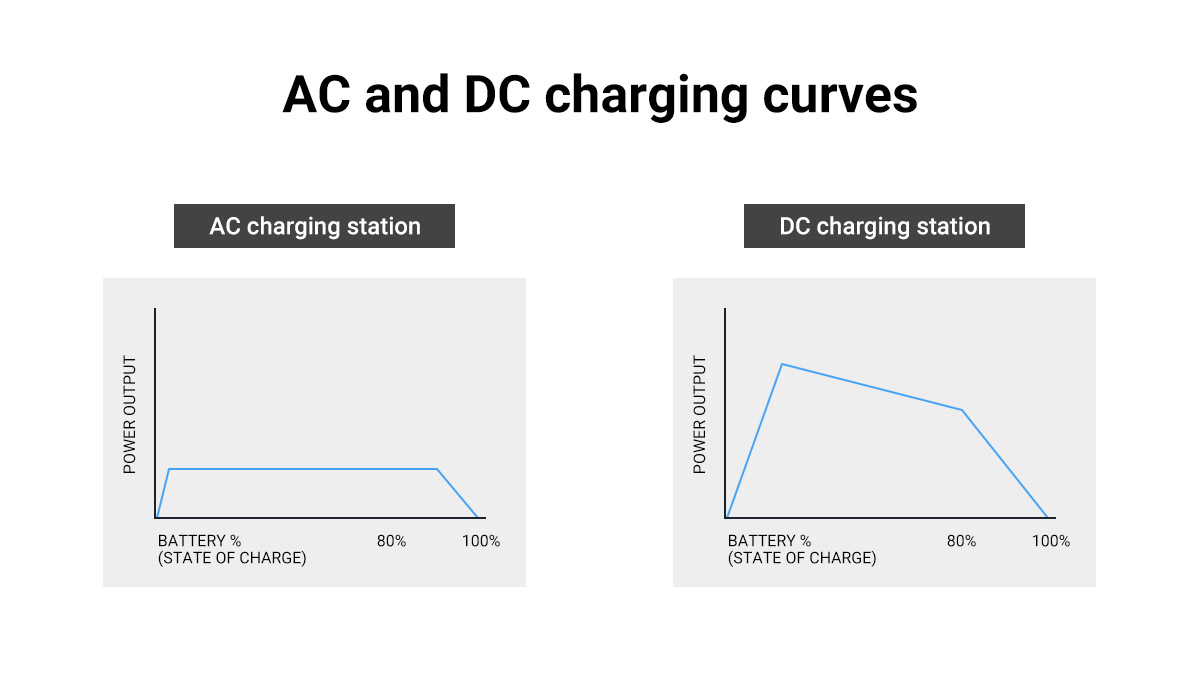
But when they go out for business or long-distance travel, they prefer to choose public DC fast chargers. In some places where drivers will stay longer, such as near restaurants, shopping malls, or movie theaters, it is most appropriate to build some 50kw low-power DC Fast Charging (DCFC) chargers. The cost of investing in them will be smaller, and the charging fees incurred will be lower. But for places that only need a short stay, such as highway corridors, high-power DC fast charging (DCFC)will be more favored, with a minimum of 150kw. Higher power means higher charging station construction costs, with up to 350kw being common today.
EV owners hope that these CCS DC chargers can charge as fast as promised, especially at the peak speed in the early stage of charging.
3. Charging Experience Determines the Loyalty of EV Owners
From the drivers plugging the charging connectors into the EVs to start charging to unplugging them to finish charging, their user experience at each step of the process determines their loyalty to the CCS charging network.
● Improve the Startup Speed of the Charging Systems: Update to the latest iteration of user-friendly systems (some chargers are unbelievably still booting with the outdated Windows XP system); avoid too complicated startup, unclear instructions, and waste of user's time.
● Flexible and Compatible Communication Protocol
● Highly Interoperable: Avoids operational costs and inefficiencies caused by different vehicle models. It also saves vehicle owners from failure challenges.
● Interoperable Charging Platforms: Car owners do not need to use different cards to pay for different charging networks.
● Ready for Plug & Charge: The hardware needs to support the latest protocols. There is no need to swipe RFID, NFC, or credit card, or even download a separate APP on the mobile phone. Users only need to set up a strict auto-payment method before the first use, and then it can be plugged in and charged seamlessly.
● Network Security: Ensure the security of money transactions and the user's personal privacy information.
4. The Quality of Operation & Maintenance Affects Customer Satisfaction
The challenge of the CCS DCFC network is not only in the initial stage of station construction but also in how to recover more costs and get greater profits. How to win a higher service reputation through later operation and maintenance and become a DC fast charger trusted by car owners should be paid more attention.
● Data Monitoring of Charging Points: Generate annual, quarterly, or monthly reports to remotely monitor charger operations in real-time.
● Regular Maintenance: Develop an annual maintenance plan and deploy predictive charging system maintenance. Improve equipment uptime, extend service life, and improve reliability.
● Timely Response to Faulty Chargers: Specify a reasonable maintenance time (response time is best controlled within 24 hours) and implement; clearly mark damaged chargers to avoid unnecessary frustration for car owners; and ensure the quantity of normally operating chargers at charging stations.
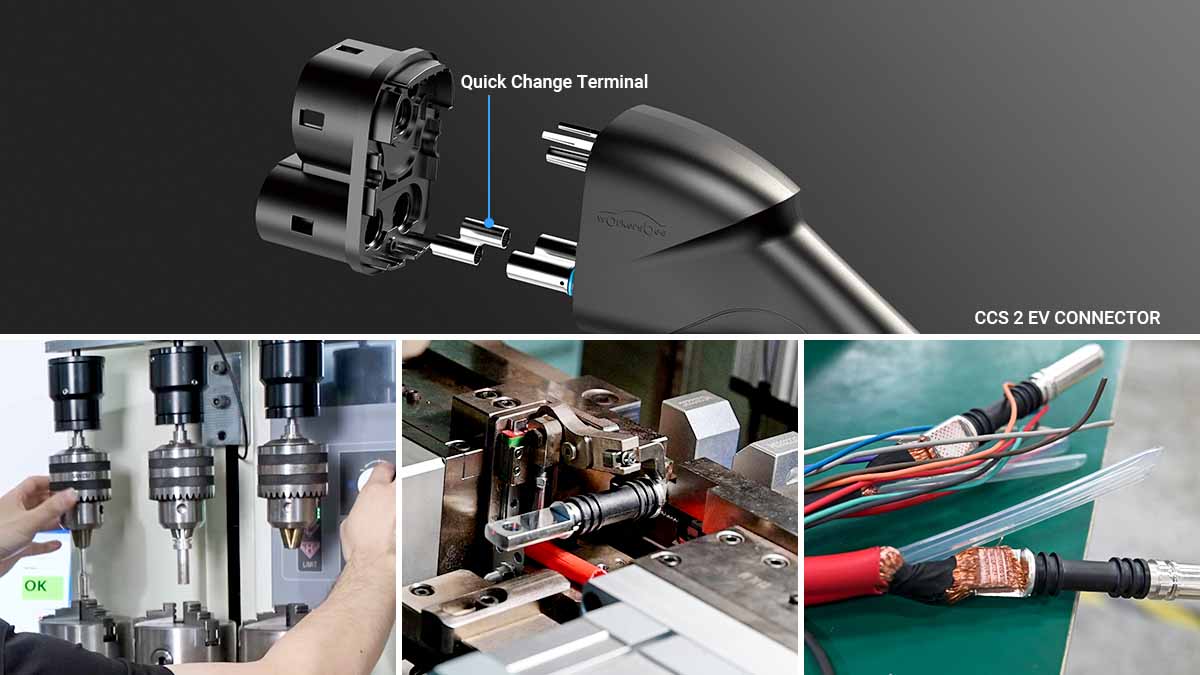
Workersbee's high-power CCS charging cable is designed with quick-change terminals and quick-change plugs, which can be easily handled by junior maintenance personnel. Terminals and plugs with higher wear rates can be replaced individually, no need to replace the entire cable, which greatly reduces O&M costs.
5. The Surrounding Environment and Supporting Facilities are Service Highlights
After the completion of the CCS charging network, if you want to attract more drivers to come to charge so as to cover the high cost, then the right location and supporting facilities can be a strong competitive condition. At the same time, it will also increase some revenues.
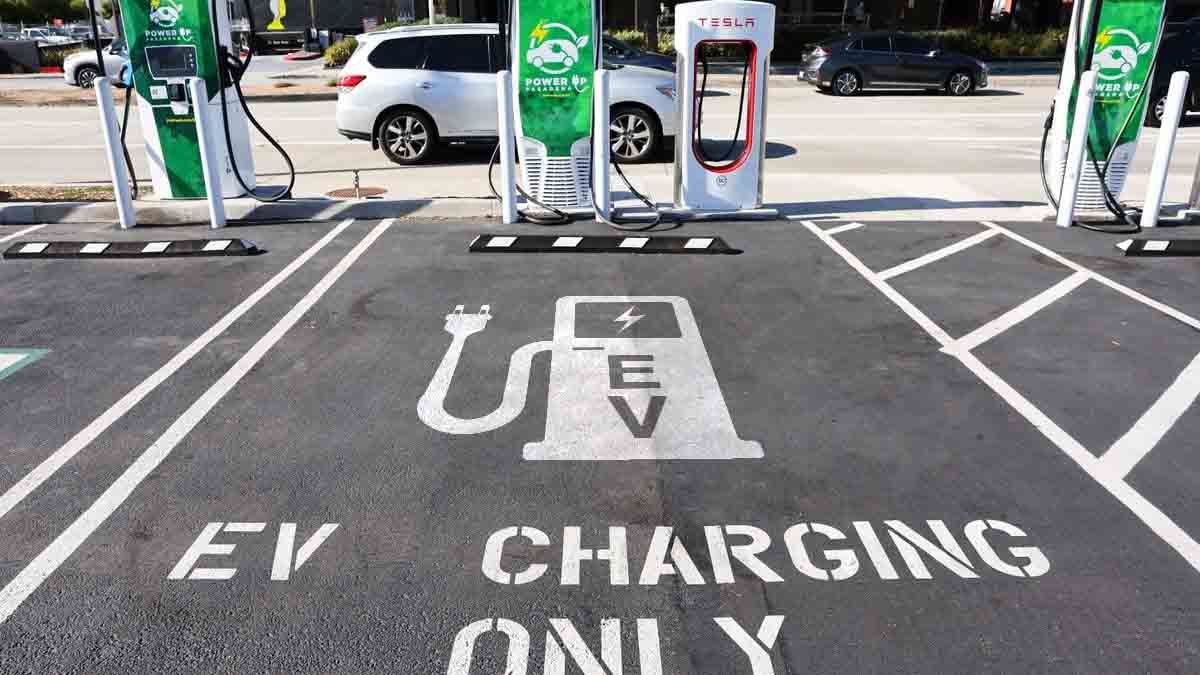
● High Accessibility: The sites should cover major corridors and be set at a reasonable distance (how far apart there will be charging stations) and density (the number of chargers that the charging station has). Consider charging needs in rural areas, not just on highways and interstates. Ensuring EV owners don't have to be anxious about range on potentially long trips.
● Adequate Parking Areas: Plan reasonable parking areas at charging stations. A reasonable idle fee is levied on electric vehicles that have completed charging but have not left for a long time. Also, avoid ICE vehicles taking up parking space.
● Nearby Amenities: Convenience stores that offer light meals, coffee, beverages, and so on, clean restrooms, and well-lit, comfortable rest areas. Consider offering vehicle or windshield washing services as well.
It would certainly be a service highlight if a canopy-covered charger could be provided under climatic conditions.
6. Get Support or Cooperation
● Automakers: Partnering with automakers to build CCS charging networks can jointly bear the high cost of building stations and operational risks. Set up some brand-specific chargers, or plan to charge discounts and other perks (e.g., a limited number of free coffees or free cleaning services, etc.) for the brand's vehicles. The charging network gains an exclusive branded customer base, and the automaker gains a selling point, achieving a win-win business.
● Government: The talisman of CCS is the White House's new standard for EVSE (only charging stations that also have CCS ports can receive federal funding). Getting government support is very critical. Understand the conditions for getting government funding and abide by them.
● Utilities: Grids are under increasing pressure. To get strong grid support, participate in the utility's managed charging program. Share valid user charging data (power demand in different locations, different time periods, etc.) to balance the load on the grid.
7. Inspiring Incentives
Develop appropriate, attractive, and user-friendly incentives. For example, charging discounts and point rewards for a certain season and a certain period of time. Set up rewards or loyalty programs to increase charger usage and accelerate recovery of station building costs. Appropriate incentive programs are also beneficial for managing charging. Plan the load management program of the charging station by managing the charging data of the drivers.
Back to the original question, CCS isn't dead, at least not yet. All we can do is wait and see, let the market decide where to go, and make all the necessary preparations before new changes happen. As a professional EVSE supplier based on technological innovation and solid craftsmanship, Workersbee is always ready to develop together with the current wave of the EV charging technology revolution. Let's embrace the change together!
Post time: Aug-23-2023

